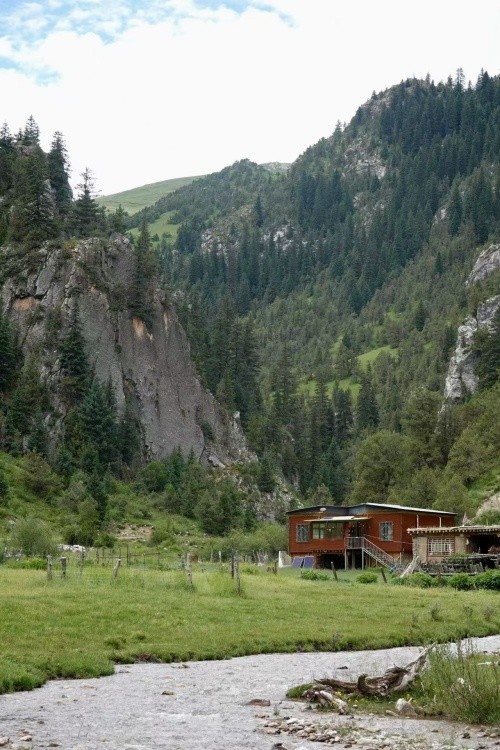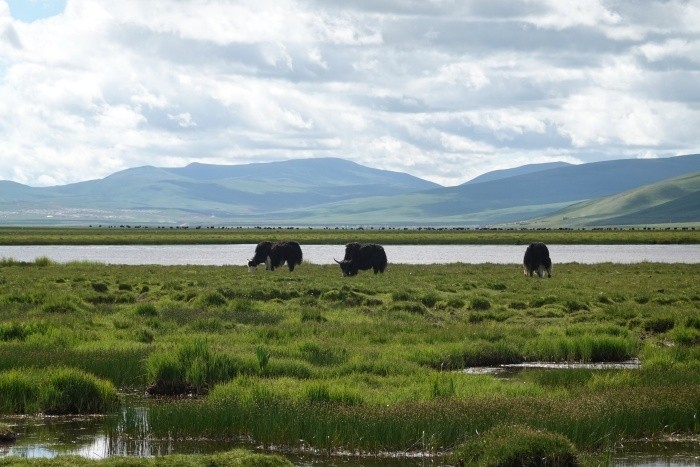Twenty Years of Green Progress: A safari through Sanjiangyuan
In the southern part of northwest China's Qinghai Province, deep in the heart of the Qinghai-Tibet Plateau, the Yangtze River, the Yellow River, and the Lancang River begin their journey toward the sea. This is the Sanjiangyuan area, known as China's "water tower."
Chinese President Xi Jinping, during an inspection tour of Qinghai in June 2021, reiterated that "lucid waters and lush mountains are invaluable assets," stressing that preserving Qinghai's environment is one of the country's top priorities and calling for the effective protection of the ecology of the world's "third pole."
On Oct. 12, 2021, the Sanjiangyuan National Park was officially designated as one of China's first national parks. Spanning 190,700 square kilometers, it preserves vast, unspoiled alpine ecosystems. It is home to the world's highest and largest plateau wetland system.
After years of pilot programs and construction, the Sanjiangyuan National Park has achieved an organic integration of ecological conservation, green development, and improving people's livelihoods. Today, its mountains and rivers are pristine, all life flourishes, and local residents live in peace and contentment.
Kunga, an ecological ranger of the Sanjiangyuan National Park from Niandu village, Angsai township, Zadoi county, starts his daily patrol by putting on his uniform and grabbing his camera. Kunga's duties include picking up litter, monitoring rivers and grasslands, and protecting wildlife. He has come to know the land intimately — where certain animals are likely to appear, their travel routes, and how the plants grow.

Kunga patrols in the Sanjiangyuan National Park in northwest China's Qinghai Province. (People's Daily Online/Cao Xinyue)
Over 10,000 ecological rangers like Kunga are employed in the Sanjiangyuan National Park. Local herders who have lived on this land for generations have found a new source of income by protecting the ecological environment.
Nangqen county in Yushu Tibetan Autonomous Prefecture is located at the southernmost tip of Qinghai. One of its natural treasures is the Ga'er Grand Canyon.
Tucked into the hills above the canyon is a Tibetan-style B&B run by Qu Jiang, a young entrepreneur who returned to his hometown after graduation from university. This summer, his business has seen a steady stream of guests.
"In recent years, I've noticed that the ecological environment of my hometown has been getting better and better. More tourists are coming, so I decided to move back and open a B&B. It has been a steady source of income for me and a boost to the local economy," said Qu.

Photo shows the scenery of the Ga'er Grand Canyon in Nangqen county, Yushu Tibetan Autonomous Prefecture, northwest China's Qinghai Province. (People's Daily Online/Cao Xinyue)
In the first half of 2025, Qinghai welcomed nearly 27.31 million tourist visits—up 21.14 percent. Total tourist spending reached 23.48 billion yuan (about $3.27 billion), marking a 20.3 percent increase year on year.
In the Sanjiangyuan area, green industries like ecotourism, organic livestock farming, and traditional handicrafts have been flourishing. The establishment of the Sanjiangyuan National Park has enhanced the ecological value of the area's high-quality specialty products. As a result, the way local farmers and herders earn a living is evolving. Today, their income comes from a blend of ecological compensation, wages as ecological rangers, and income from green industries.
At an alpine wetland ecological and meteorological station in the Longbao Wetland, located in the core area of Sanjiangyuan, advanced instruments continuously monitor weather and ecological indicators. Data is transmitted 24/7 to the Qinghai provincial meteorological information center, playing an important role in monitoring the status of the ecological environment and climate change, and supporting scientific research.
"Sanjiangyuan is both a sensitive and fragile region when it comes to climate change. The data we gather is important for protecting and improving the ecosystem in Sanjiangyuan," said He Yongqing, director of the meteorological observatory in Yushu.

Photo shows the Longbao Wetland in the Sanjiangyuan area, northwest China's Qinghai Province. (People's Daily Online/Cao Xinyue)
According to He, some of the data collected at these meteorological stations is also shared with international organizations for scientific research, helping the international community better respond to climate change and improve ecological governance.
The story of the Sanjiangyuan National Park is a vivid example of how China's national park system has moved from concept to reality. Sanjiangyuan's journey is a highland song of harmony between humanity and nature.
Guided by the principle that "lucid waters and lush mountains are invaluable assets," this "water tower of China" has produced a powerful answer to protecting the source of life, strengthening the ecological barrier, and benefiting plateau residents. This answer belongs not only to Sanjiangyuan but also to a beautiful China committed to green development.

 Scan the QR Code
Scan the QR Code